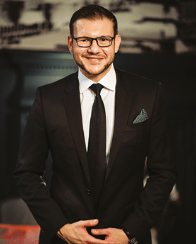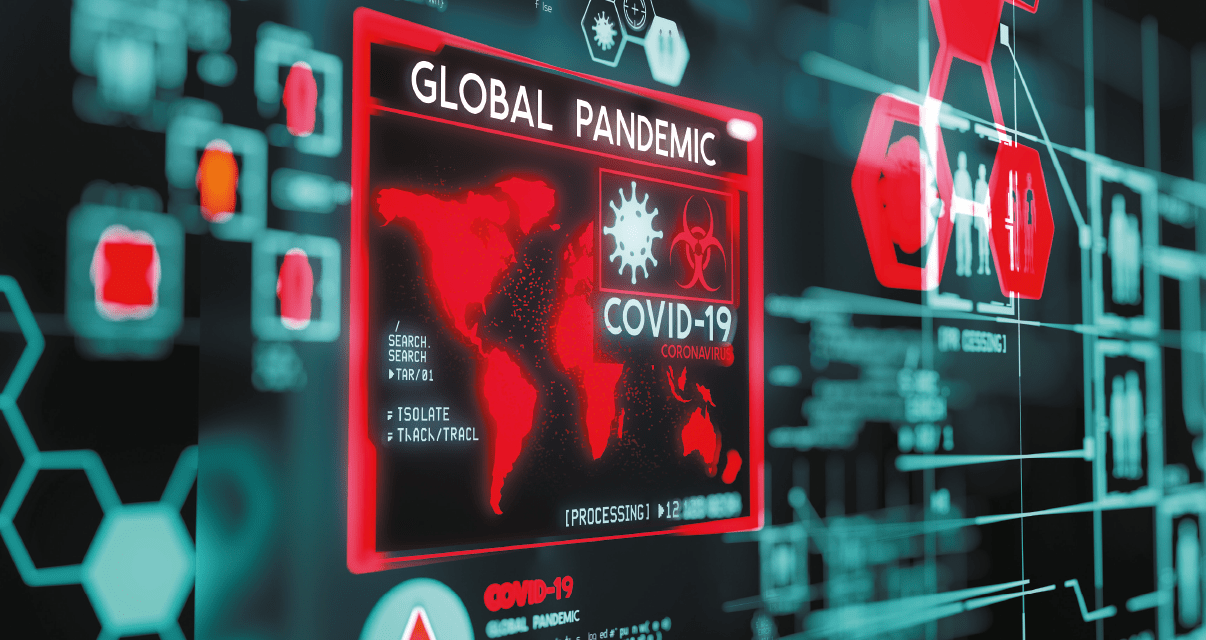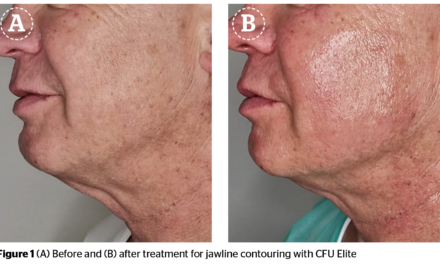Wendy Lewis interviews five practitioners from the US and the UK for their predictions on what 2021 will bring to the aesthetics industry

Wendy Lewis & Co Ltd, Global
Aesthetics Consultancy, author
of 12 books, and Founder/
Editor-in-Chief of www.
beautyinthebag.com. Her newest book is
Aesthetic Clinic Marketing in the Digital Age
(CRC Press 2018)
contact [email protected]
Over the past nine months,
most if not all of us have experienced the agony of lockdowns and restrictions on how we live and conduct business. It was indeed a shock; we had no early warning, nothing to really compare it to in our lifetimes, and were unprepared for the consequences. Thus, the effects drove us to feelings of anxiety, loneliness, and despair. We have had to make wide-ranging adjustments to our daily lives and routines that have caused us to explore new paths for communicating socialising, networking and learning. The pandemic has put us through changes and appears to be holding its grip on us still.
Now let’s look at the bright side and what we have learned. For starters, I would bet that a lot more of us have become proficient on Instagram, know how to log on to webinars like a pro, and make a superior cup of coffee. Zoom has become a household word and our digital skills and technological talents have risen to new heights. On a more human level, we have revisited or deepened relationships with our kids, family, friends and colleagues and sought to expand our circles on LinkedIn globally.
Not having the opportunity to attend many live conferences has also forced us to become better communicators. For that, we must applaud the conference organisers who have worked tirelessly to manage the new normal effectively and stimulate the aesthetics industry moving forward by keeping us connected. COVID-19 has been the main driver of all things digital.
Fortunately, there is hope in sight for vaccines, possibly as early as Q3 2021, but it may take some time before these are widely available. According to the WHO, ‘First, we can beat COVID-19 with science, solutions and solidarity … Although this is a global crisis, many countries and cities have successfully prevented or controlled transmission with a comprehensive, evidence-based approach. For the first time, the world has rallied behind a plan to accelerate the development of the vaccines, diagnostics and therapeutics we need, and to ensure they are available to all countries on the basis of equity.’1
Now, let’s turn to the experts for their insights on trends and technologies and what we can look forward to in 2021.

David J. Goldberg, MD
Dermatologist Skin Laser & Surgery Specialists
New York, NY
The pandemic did not stop innovation in the global aesthetics industry, but it did slow it down in some cases. What we are seeing now are some exciting new launches, and one of the most robust categories is non-invasive body shaping.
Some radiofrequency (RF) treatments may be used as a standalone modality for fat reduction utilising heat-induced adipocyte apoptosis. HIFEM (high intensity focussed electromagnetic wave) treatment has been shown to induce muscle growth and body shaping. The newly launched Emsculpt Neo® (BTL Aesthetics) has combined in one handpiece both fat-melting RF and muscle tightening EM. For the first time ever, treating abdomens over a series of weekly thirty-minute treatments have shown a 30% reduction in adipocytes, 25% increase in muscle hypertrophy and waist reduction.
We presented data at the Virtual ASDS 2020 showing irrefutable evidence that this combined technology induces irreversible programmed cell death (apoptosis) of adipocytes. Subjects received a series of three 30-minute abdominal treatments consisting of RF therapy, and HIFEM procedure. In addition, one subject served as a control. Skin biopsies were collected from the treatment area at the baseline, as well as at 1-week, and 1-month after treatment to examine the fat tissue.
Waist circumference measurements and digital photographs were taken at the same time points and satisfaction and therapy comfort were assessed. Baseline, before treatment, samples showed a healthy appearance of fat tissue composed of round-shaped cells of uniform size. At follow-ups, the fat tissue demonstrated an elevated level of apoptosis and consequent fat reduction. Adipocytes were found to be flattened/shrunk and of smaller size (-33.5% at 1 week; -31.7% at 1-month) along with numerous ruptures of the fat cell membrane. The control samples showed no treatment-related changes in the fat tissue. Waist circumference decreased by an average of 2.20 cm in the treated patients. The therapy was comfortable with high patient satisfaction and no adverse events.
The results showed that simultaneous treatment of both HIFEM and RF can trigger fat loss along with fat cell apoptosis. The efficacy of the simultaneous application of HIFEM and synchronised RF seen in this study is in agreement with previous research that has shown a 29.8% reduction in the subcutaneous fat layer, as measured by the ultrasound imaging system.
Patients wishing to improve their abdominal body contour may benefit from a mutual combination of the synchronised RF and HIFEM energies. This study documents that the simultaneous use of both technologies is safe and results in a noticeable body shaping effect, achieved primarily by adipocyte apoptosis and lipolysis, manifested as shrinkage and reduction in size and number of fat cells. What the study did not examine is the RF induced effect of skin tightening. It is well accepted that RF skin treatment does lead to skin tightening because of its impact on collagen shrinkage and new collagen formation. It is likely, therefore, that a combined RF and HIFEM treatment can induce the combined effects of muscle and skin tightening as well as fat reduction.
As the non-invasive body contouring market evolves, combined RF and HIFEM technology represents the first technology that can combine in one treatment the ultimate desired effects on muscle, fat and skin. It is the next generation in non-invasive body contouring.
Another emerging area is the intimate wellness category. With everyone’s busy lives and the ever-present stress in our world, intimacy can be one of the first issues that arise in a relationship. Patients are looking for non-prescription, non-invasive aesthetic treatments to address these issues and the field of intimate wellness offers innovative non-invasive solutions and safe treatments to enhance sexual wellness.

Michael Gold, MD
Dermatologist
Gold Skincare Center
Nashville, TN
The year 2020 will go down as the most bizarre year that any of us has ever imagined or could have predicted. As a result of COVID-19, we are still uncertain as to what to expect and what to look for in 2021, especially in the cosmetic and aesthetic space. One thing that we hope will continue is that the cosmetic industry is not suffering as much as many of us and those in the financial circles predicted. As long as our offices are able to remain open and continue to treat patients, there is hope that our cosmetic practices will come back as strong as ever, but with the caveat that safety of patients, staff, and us as providers must be the most important aspects of our delivery of care.
So, let’s presume that we can continue opening back up and increase the number of patients we are seeing, what are we going to be excited about? What is going to be new to the market and what will these innovations do to enhance the safety concerns that are now needed for every visit? Seeing their faces up close on Zoom and other platforms has allowed our patients to actually look at themselves in a different way than in the past. This has sparked interest in aesthetic treatments and with working from home, procedures with more downtime have become more accepted by some patients. Procedures that are ‘touchless’ are also becoming increasingly important, especially in the medical device category.
Aesthetics companies have become increasingly more innovative with new technologies that are coming to market now, which has been very exciting. Among the technologies I like are the Aerolase Neo® for my acne patients that is touchless and virtually painless. I like the concept of fat reduction and skin tightening with the Cynosure SculpSure® and TempSure® with the new FlexSure™ patches that are applied to the skin. The Venus Bliss™ also combines laser fat reduction and skin tightening in one device. We are using InMode’s Evoke and Evolve that allow wearable applicators for tightening and toning on the face and body with high patient satisfaction. For microneedling with RF, the InMode Morpheus8 and the Cynosure Potenza™ are some of the most innovative face and body needling devices on the market.
Another newcomer is the SofWave™ next-generation ultrasound technology — Synchronous Ultrasound Parallel Beam Array (Superb™) — that allows for consistent delivery of energy that addresses the growing demand for treatments that deliver noticeable wrinkle reduction and skin tightening with no downtime.
The injectable space is also growing in popularity among consumers, possibly due to wearing masks. We have several new fillers and toxins for use in the US that are interesting, and I think the duration of effect will be the most important focus for neuromodulators moving forward. These innovations are great for us and great for our patients which I hope will make 2021 a banner year for the industry.

Mark M. Hamilton MD, FACS
Chair of the Public Information Committee for the AAFPRS
Hamilton Facial Plastic Surgery
Indianapolis, IN
In my opinion, one important trend is that no downtime treatments are getting increasingly better. Our patients have been searching for cosmetic treatments that have little to no discomfort or downtime and can be done in the office. In that vein, the new Evoke and Evolve from Inmode are a big step forward. Evoke is a radiofrequency treatment for the face and neck that has virtually no discomfort (warm sensation) can be done in 30 minutes with no downtime, and over a series of treatments tightens skin and reduces fat. Its partner for the body, Evolve, adds muscle building to fat reduction and skin tightening. While surgery still provides the best results, patients who do not want to undergo painful procedures or who cannot take time off have never had such great options to rejuvenate and turn back the clock.
Another popular category is non-surgical thread lifts. There are currently two fully absorbable suture materials FDA approved for use in the US for minimally invasive thread lifting techniques — PLLA/PLGA and polydioxanone (PDO). Having fully absorbable sutures and cones is a big paradigm shift, as the predecessors, bidirectional barbed permanent sutures, were often fraught with complications. Thread lifting produces a subtle yet visible lift in the skin and over time helps to thicken the dermis through neocollagenesis. Thread lifting is a good option for someone who may not be a good surgical candidate or in whom surgical scars may be more difficult to hide with short hair. An ideal candidate is someone with facial laxity correctable by lifting and contouring along a straight line vector and with adequate dermal thickness to prevent palpability of the suture. Caution is advised in patients with a history of autoimmune disease, allergies to foreign bodies, active systemic or localised infections, or patients on blood thinners. A less than ideal candidate for a thread lift is a patient with heavy jowling, severe skin laxity, or excess weight of the face.
The newest line of fillers introduced in the U.S. market is the Teoxane RHA® (Resilient Hyaluronic Acid) collection from Revance. These fillers are designed with a hyaluronic network that more closely resembles the hyaluronic acid found in our skin that allows more flexibility with movement and to look more natural with expression. The RHA fillers have been available for many years in Europe and other markets around the world and have a proven track record. RHA® 2, RHA® 3, RHA® 4 have been granted FDA approval so far.
My predictions for 2021 are an ever-growing demand for neuromodulators among patients. Revance® Therapeutics will be entering the neuromodulator market with RT002 (Doxibotulinumtoxin A), which is expected to receive FDA approval in 2021 for the treatment of glabellar lines. This product promises a longer duration of activity compared to the neuromodulators currently on the market lasting up to six months. In addition, studies are showing new ways that neuromodulators, such as Botox® Cosmetic, can be dosed to provide longer lasting results.
The ultimate winners will be patients who will be able to space their office visits out further while still getting the same great results.

Dr Uliana Gout, MD
President of the British College of Aesthetic Medicine (BCAM)
London Aesthetic Medicine Clinic
London, UK
Some of the current trends in medical aesthetics include the rise of new applications and methods with dermal fillers and neuromodulators. The concept of pan-facial toxin is taking hold and people are now asking for not just the upper face to be treated, but also the full face and even neck and cheeks to ensure facial harmony.
There is a definite increase in younger patients from 30-35 interested in prevention with botulinum toxin. We are seeing more protocol formulation with regard to prevention and early intervention for these patients. Our publication in Journal of Drugs and Dermatology (2017) was the first global consensus study on Prevention and Early Intervention, and we are now seeing global acceptance of the importance of thinking ahead and creating strategies for our millennial patients, a population that is growing. For these patients, toxin use is gentler and more strategic, for example, targeting larger muscles, habitual overuse and genetic hyper contractions.
For fillers, cannulas are the word of the year and we have come to appreciate how worthwhile it is for us to invest in these tools. I especially like the larger bore cannulas and the more rigid varieties that don’t bend every time there is resistance. However, needles should not be overlooked, as for precision and accuracy these can help us achieve valuable results. Knowing the danger zones and understanding how to navigate through the tissue planes and the right instruments to use is the secret to getting optimal results.
In our clinic, we are seeing a rise in pigmentary disorders, including melasma, especially as many patients have lost their routines and have not been able to see their clinicians for chemical peels, IPL and laser therapies. Hence, there has been a rise in requests for home preparations with kojic acid, exfoliants (AHA/BHA), retinoids, arbutin and in some cases hydroquinone. More importantly, just because patients have been at home more than before does not mean they should avoid wearing SPF, so we have been reminding them of the importance of prevention and how UVA still penetrates through the window.
Another skin condition that is problematic for patients now is congestion and spots due to wearing masks and patients are seeking more home-based treatments for the prevention and treatment of clogged pores and acne lesions. We recommend changing masks regularly as well as management with salicylic acid cleansers, hyaluronic acid moisturisers, humectants and gentle retinoids. Salicylic peels for pore reduction have also been popular now due to low downtime, and DIY treatments are on the rise since patients have not been able to maintain their clinic visits in the short term.
Finally, another chronic condition that is on the rise is dry hands as a result of the ever-increasing use of sanitising preparations. We recommend regular moisturisation with stronger emollients, especially during the colder months, and this trend is likely to continue well into 2021.

Nestor Demosthenous MBChB, MSc, BSc
Aesthetic Practitioner
Edinburgh, Scotland
Non-surgical body contouring and sculpting is one of the fastest-growing treatment categories worldwide. The ‘little to no’ downtime with few associated risks is appealing to many patients, especially in light of the ‘Quarantine 15’ trend we have noticed with patients spending more time at home and gyms being shut down. More patients are interested in these solutions to help them get back in shape. Thus, the novel technologies we are seeing are developing at an exponential rate.
By electrically stimulating specific muscles, we can increase their size and strength.
Electrical Muscle Stimulation (EMS) is the evocation of muscle contraction using electric impulses. EMS provides an electrical current at a specifically designed frequency to target motor nerves causing them to depolarise. This stimulation creates muscle contractions that can be quick and frequent, fast with long pauses, or contractions that are held for several seconds or minutes at a time. Similar to strength training, muscle fibres undergo microscopic tears, and then cells attempt to repair the damage, which results in increasing muscle size and strength. This repair process, known as hypertrophy, begins after each treatment and involves releasing hormones, such as testosterone, to activate cell recovery, form new blood capillaries, repair muscle fibres, and manage the gain in muscle mass. The body needs to repair, build and increase muscle size over several weeks. It can take 4–16 weeks to see marked visible differences in the definition, size and strength of muscles.
With a patient population who is conscious of their appearance, wants to look and feel great, introducing body contouring devices are a ‘no-brainer’. These treatments are also bringing new patient populations into our clinic. We market to three demographics. In the first place, patients who strive to improve their aesthetic appearance and functional performance. Already wise to nutrition and exercise, this person wants to achieve better results. We have seen an increase in male patients attending our clinic. Next, the ‘mummy tummy’ patient who finds it difficult to achieve her trim pre-pregnancy abdomen.
Finally, the rehabilitation patient, either post-op or chronic pain who often seek out treatments themselves or can be referred from their GP or physiotherapist.
We have introduced truSculpt® flex from Cutera, a unique bio-electric current stimulation, that can contract a specific muscle or muscle group, well and above what would be tolerated with a traditional electrode pad. The device applies an even current distribution along the length of a specific muscle, allowing a highly targeted and isolated method of stimulation. truSculpt flex delivers 10 to 30 mA of energy to stimulate motor neurones, and different types of torsional contractions can be achieved by changing the polarity of the electrodes in real-time. The system includes 16 handpieces to allow up to eight areas to be treated simultaneously. During a forty-five-minute truSculpt flex treatment, a fit adult could perform the equivalent of up to 54,000 crunches. It has been shown to increase muscle mass by 30%, and emerging data has shown statistically significant improvement in chronic lower back pain sufferers. These devices are heralding a new and very exciting era in aesthetic medicine that expect will continue to increase in consumer awareness and desire for 2021.
Skin care sales have rocketed in most clinics due to lockdown. Clinics have made a greater effort to engage with and educate their patients digitally on the importance of clinical grade skin care. There is a lot more online information about active skin care ingredients, live webinars, Q&A sessions and online skin health events. This drive to educate patients has resulted in patients taking a greater interest, as well as spending money which could have been earmarked for holidays or socialising. We use the ZO® Skin Health system predominantly in clinic, and with a plethora of at-home peels patients can do on their own, it has proven to be the perfect lockdown skin care.
References
- World Health Organization. World Health Assembly charts course for COVID-19 response and global health priorities. WHO: Geneva, 5 November 2020. Available at: https://www.who.int/news/item/05-11-2020-world-health-assembly-charts-course-for-covid-19-response-and-global-health-priorities [last accessed 18th November 2020]






